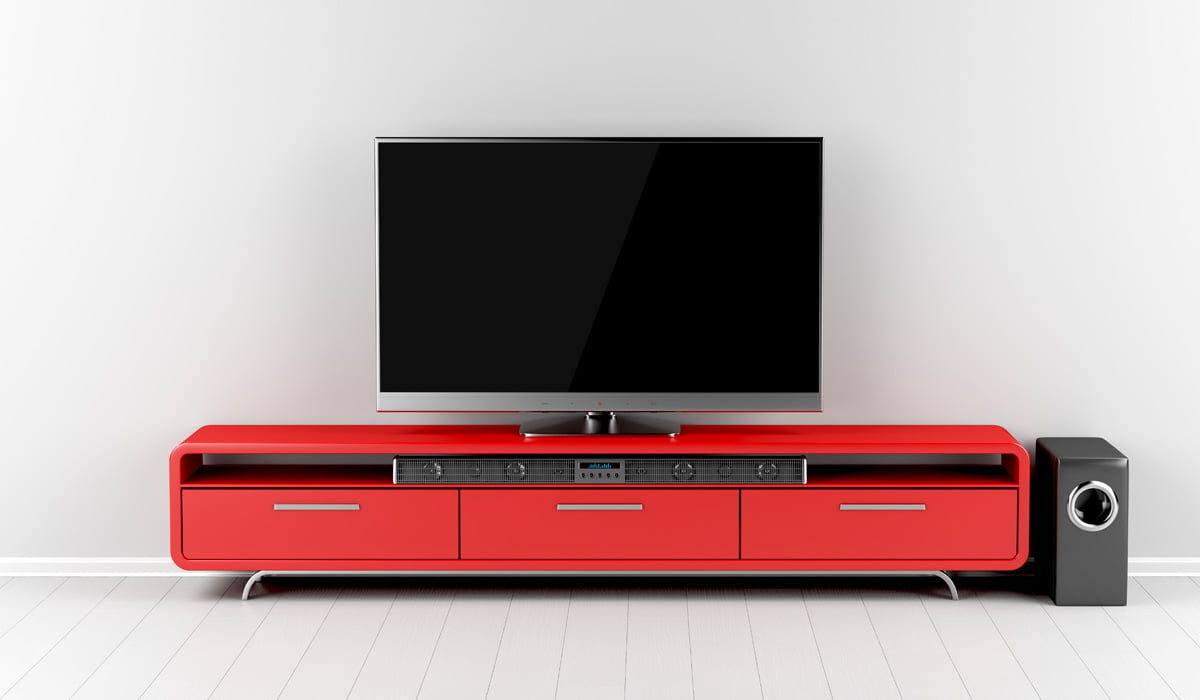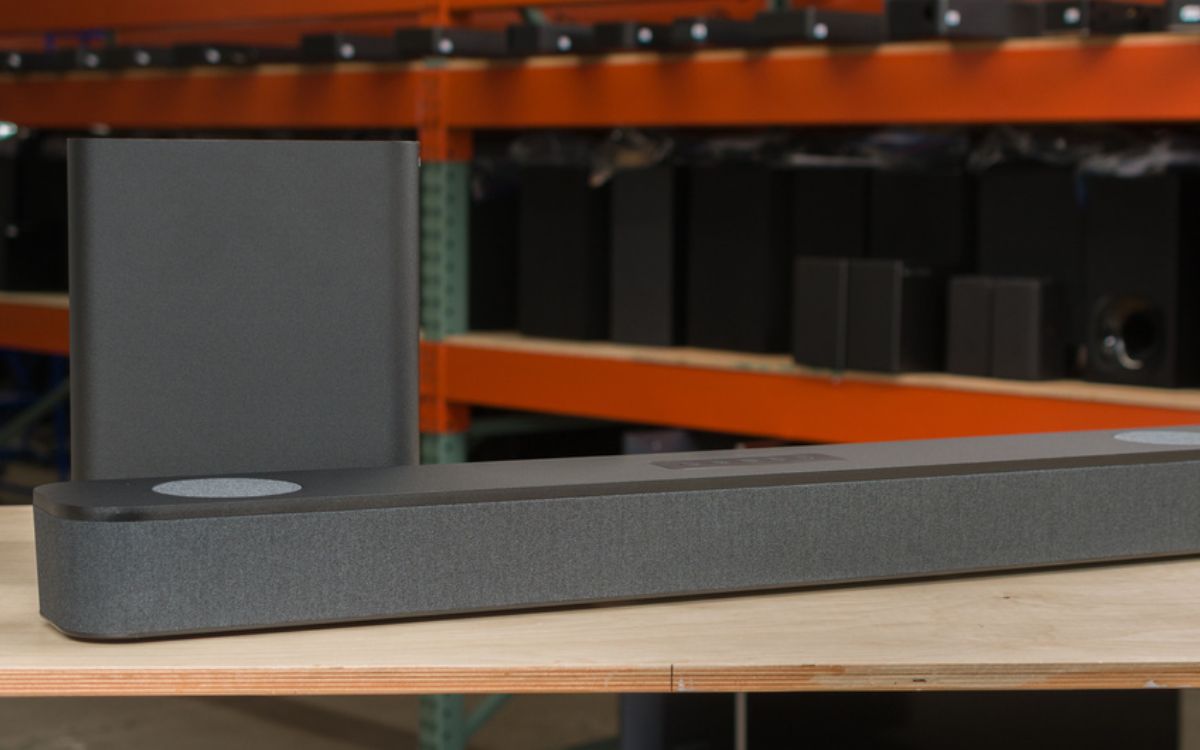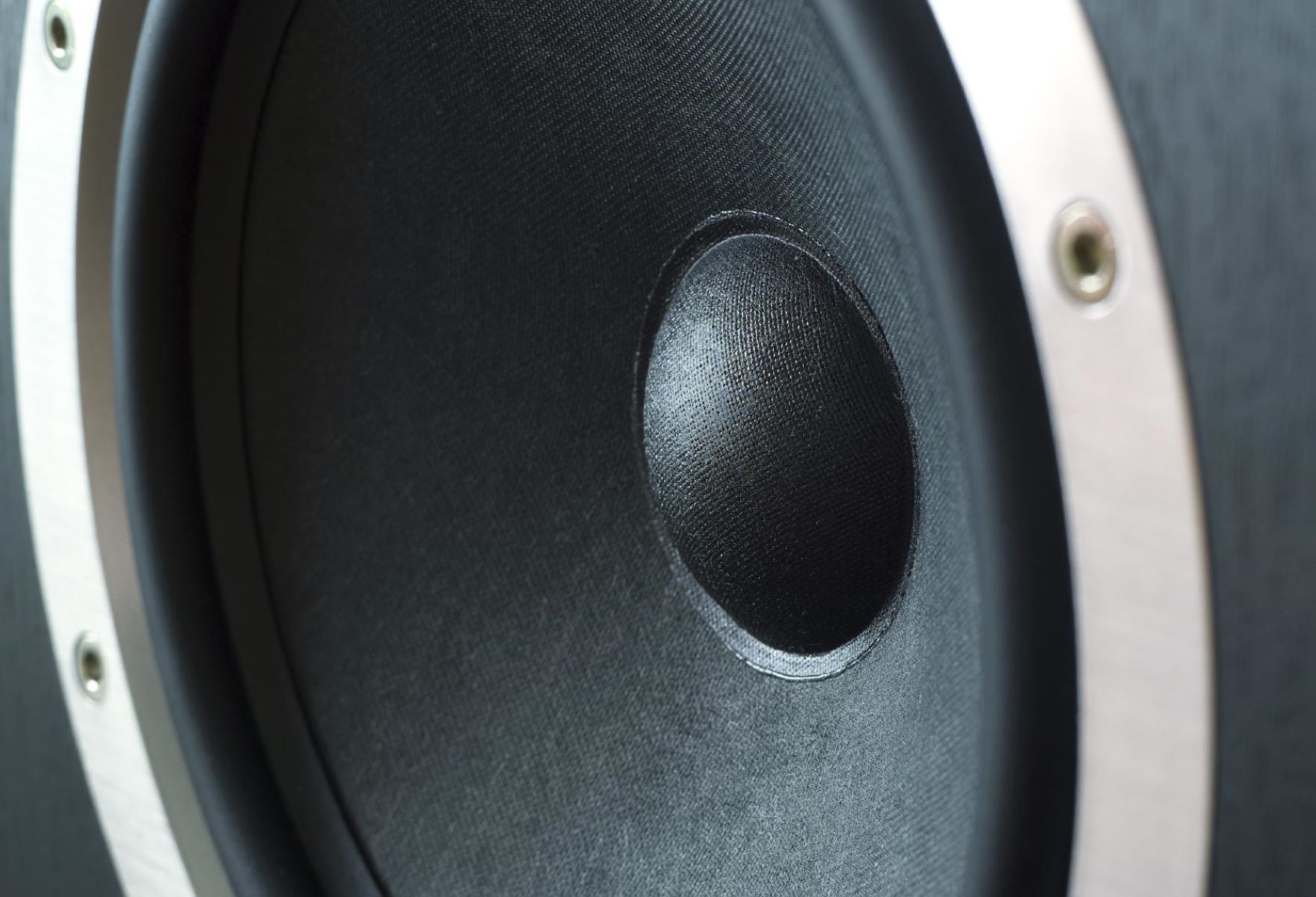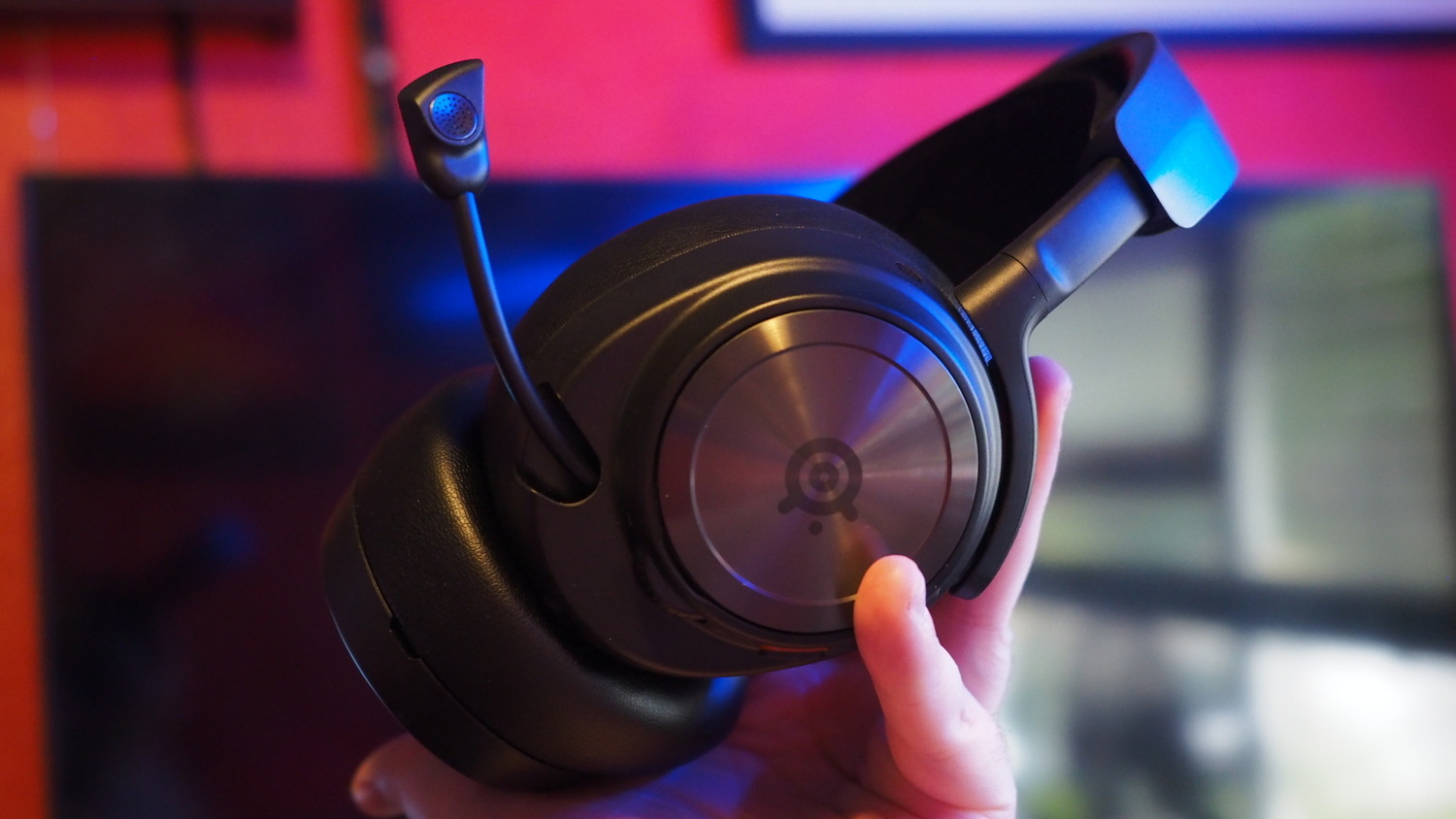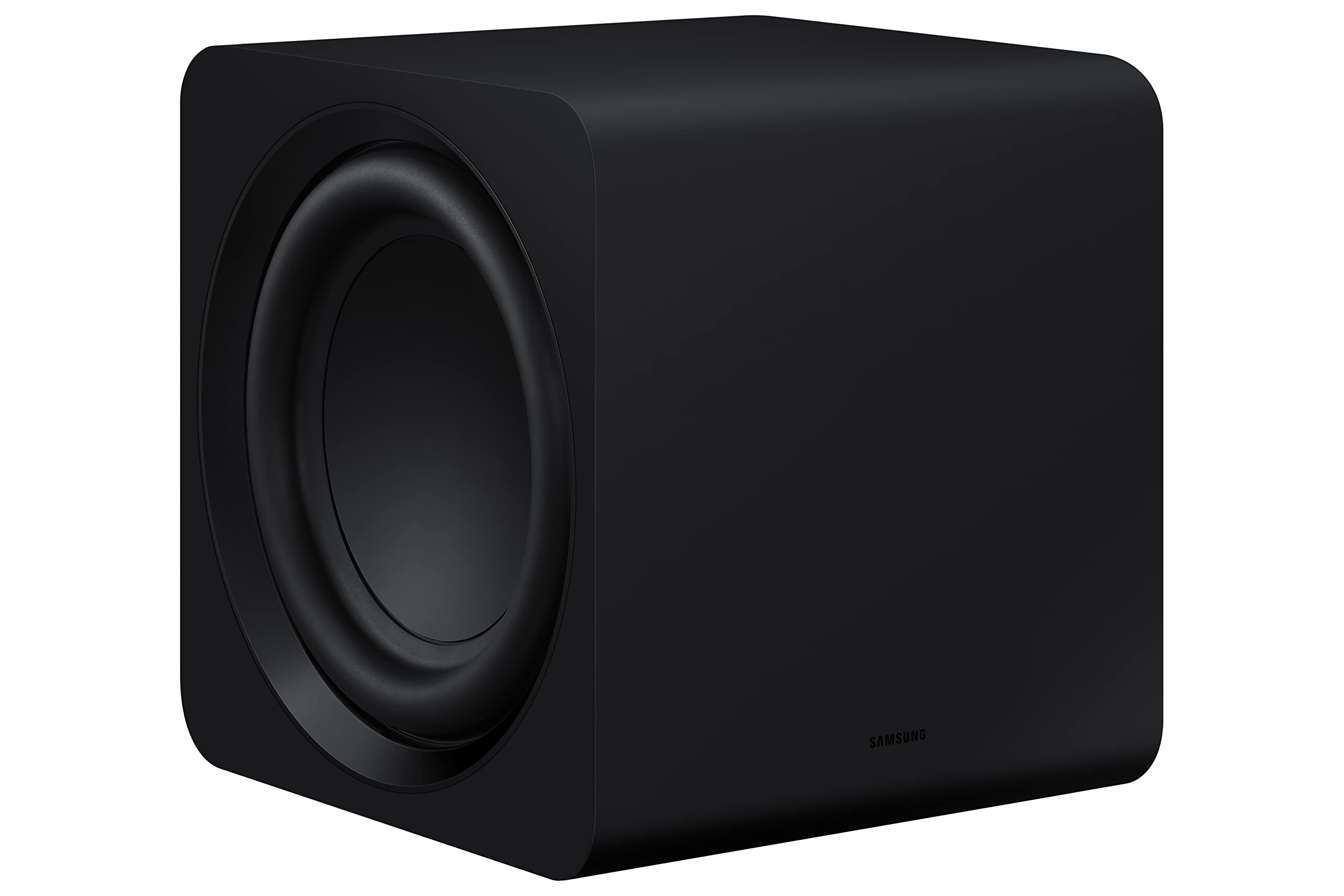Home>Production & Technology>Surround Sound>Why Is My Surround Sound Not Working With My TV?


Surround Sound
Why Is My Surround Sound Not Working With My TV?
Published: December 22, 2023
Having trouble getting your surround sound to work with your TV? Discover possible solutions and troubleshooting tips to fix the issue and enjoy immersive audio.
(Many of the links in this article redirect to a specific reviewed product. Your purchase of these products through affiliate links helps to generate commission for AudioLover.com, at no extra cost. Learn more)
Table of Contents
Introduction
Surround sound systems have revolutionized the way we experience audio in our homes. They provide an immersive and cinematic audio experience that enhances movies, music, and gaming. However, it can be frustrating when your surround sound system fails to work properly with your TV. There can be several reasons behind this issue, including incorrect connections, audio settings, speaker placement, firmware updates, and hardware compatibility.
In this article, we will explore the common causes of why your surround sound system is not working with your TV and provide effective solutions to rectify the problem. Whether you are a tech-savvy enthusiast or a novice to surround sound systems, this guide will help you troubleshoot and optimize your audio setup.
Before we delve into the troubleshooting steps, it is important to understand the basic setup of a surround sound system. These systems typically consist of a receiver, speakers, and a subwoofer. The receiver acts as the central hub and is responsible for decoding the audio signals and distributing them to the corresponding speakers. The speakers are strategically placed around the room to create a multidimensional sound experience, while the subwoofer adds depth and bass to the audio.
Now, let’s dive into the various steps you can take to diagnose and resolve the issue of your surround sound system not working with your TV.
Checking the Connections
One of the most common reasons for surround sound system not working with a TV is incorrect or loose connections. It’s essential to ensure that all the necessary cables are properly connected to the appropriate ports. Here are the steps to check the connections:
- Start by examining the HDMI or optical cable that connects the TV to the surround sound system. Make sure it is securely plugged into the HDMI or optical output port on the TV and the corresponding input port on the receiver.
- If you are using RCA cables, check that the red and white connectors are firmly inserted into the audio output ports on the TV and the corresponding input ports on the receiver.
- Verify that the power cables of both the TV and the surround sound system are plugged into a working electrical outlet.
- If you have additional devices connected to the surround sound system, such as a Blu-ray player or game console, ensure that their audio and video cables are properly connected to the receiver.
After checking the connections, power on the TV and the surround sound system. Select the appropriate input source on the receiver to ensure that the audio is being routed correctly from the TV to the speakers. Consult the user manual of your TV and surround sound system to find the specific input settings.
If the connections appear to be correct and the issue persists, try using different cables to rule out any potential cable defects. Sometimes, a faulty cable can prevent the audio signal from being transmitted properly.
By thoroughly checking and troubleshooting the connections between your TV and surround sound system, you can often resolve the problem and restore the audio functionality.
Adjusting the Audio Settings
Another reason why your surround sound system may not be working properly with your TV is incorrect audio settings. It’s important to configure the audio settings on both the TV and the surround sound system to ensure compatibility and optimal audio performance. Here are some steps to adjust the audio settings:
- On your TV, navigate to the audio settings menu. Depending on the brand and model of your TV, the exact location of this menu may vary. Look for options related to audio output, audio format, or audio mode.
- Select the appropriate audio output option. If your TV has multiple audio output options, such as HDMI and optical, choose the one that is connected to your surround sound system.
- Check and modify the audio format or audio mode settings. Some TVs have specific audio format settings, such as Dolby Digital or DTS. Ensure that the selected audio format is supported by your surround sound system.
- Adjust the volume levels. Increase the volume on both the TV and the surround sound system to a comfortable level. Sometimes, the audio may not be audible if the volume levels are set too low.
Once you have adjusted the audio settings on the TV, proceed to the settings of your surround sound system:
- Access the settings menu on your surround sound system’s receiver. Refer to the user manual for instructions on navigating the menu. Look for audio-related settings, such as speaker setup, audio mode, or equalizer settings.
- Ensure that the speaker setup is correctly configured. Verify that the number and placement of the speakers are accurately detected by the surround sound system. Some systems offer automatic speaker calibration, which can fine-tune the audio output based on your room’s acoustics.
- Experiment with the audio mode settings. Most surround sound systems provide various audio modes, such as stereo, surround, or movie modes. Explore these options to find the mode that best suits your preferences and audio content.
- Adjust the equalizer settings if available. Some surround sound systems allow you to tweak the bass, treble, and other audio frequencies to achieve a personalized sound signature.
By properly adjusting the audio settings on both your TV and surround sound system, you can optimize the audio performance and potentially resolve any compatibility issues.
Troubleshooting the Speaker Placement
The placement of your surround sound speakers plays a crucial role in creating an immersive audio experience. Incorrect speaker placement can result in distorted or unbalanced sound. If your surround sound system is not working properly with your TV, it’s essential to troubleshoot the speaker placement. Here are some steps to consider:
- Check the positioning of the front speakers. They should be placed equidistant from the TV, forming an arc. Ideally, they should be at ear level when you are seated for optimal sound projection.
- Ensure that the center speaker is positioned directly below or above the TV. It should be centered and facing the listening area.
- Check the placement of the surround speakers. They should be positioned slightly behind the listening area, facing inward. If possible, place them at ear level for better sound localization.
- Verify that the subwoofer is in an appropriate location. The subwoofer can be placed anywhere in the room, as low-frequency sounds are non-directional. Experiment with different placements to find the spot that provides the best bass response.
If you have already followed the recommended speaker placement guidelines and are still experiencing issues, consider the following troubleshooting steps:
- Double-check the wiring connections of the speakers. Make sure they are securely connected to the receiver and that the polarity is correct. Incorrect wiring can result in phase cancellation or diminished sound.
- Inspect the speaker cables for any signs of damage or frayed ends. Replace them if necessary to ensure a strong and reliable connection.
- Experiment with the speaker distances and levels. Some surround sound systems allow you to adjust the distance and volume levels of each speaker individually through the receiver’s settings. Fine-tuning these settings can help balance the sound and create a cohesive audio experience.
- Consider using a sound meter or audio calibration tool to accurately measure and adjust the speaker levels. This can aid in achieving proper sound balance and uniformity across all speakers.
By troubleshooting and optimizing the speaker placement in your surround sound system, you can address any audio issues and improve the overall sound quality.
Updating the Surround Sound System Firmware
Like any other electronic device, surround sound systems often receive firmware updates to address bugs, improve performance, and add new features. If your surround sound system is not working properly with your TV, it’s worth checking if there are any firmware updates available. Here are the steps to update the firmware:
- Check the manufacturer’s website or the user manual of your surround sound system to determine if firmware updates are available. Look for the specific model of your system and any related update instructions provided.
- If a firmware update is available, download the latest version onto a USB flash drive or an SD card, following the instructions provided by the manufacturer.
- Ensure that your surround sound system is powered on and connected to the internet, if applicable. Some systems may require an internet connection to initiate the firmware update process directly from the device.
- If your system does not support an automatic online update, insert the USB flash drive or SD card containing the firmware update into the appropriate port on the receiver.
- Navigate to the settings or setup menu on your surround sound system. Look for options related to firmware update or system update.
- Follow the on-screen prompts to initiate the firmware update. The process may take a few minutes, during which your surround sound system will restart.
- Once the firmware update is complete, verify if the issue with your surround sound system and TV compatibility has been resolved. If not, proceed to the next troubleshooting step.
It’s important to note that firmware updates should be performed with caution, as interruptions or incorrect installation can cause further issues. Read the manufacturer’s instructions carefully and ensure that you are using the correct firmware version for your specific surround sound system model.
Updating the firmware of your surround sound system can often resolve software-related compatibility or performance issues. It is advisable to periodically check for firmware updates to ensure that your system is up to date and functioning optimally.
Resetting the Surround Sound System
If you are still experiencing issues with your surround sound system not working with your TV, performing a reset can help resolve any software glitches or conflicting settings. Resetting your system will restore it to its default factory settings, eliminating any customized configurations that may be causing the problem. Here’s how you can reset your surround sound system:
- Locate the reset button on your surround sound system’s receiver. The location of the reset button may vary depending on the model. Refer to the user manual if you have trouble finding it.
- Ensure that your system is powered on and connected to a display device, such as a TV or a monitor.
- Using a small, pointed object like a paperclip or a pen, press and hold the reset button for about 10-15 seconds. This will initiate the reset process.
- Release the reset button and wait for the surround sound system to restart. This may take a few minutes.
- Once the system has restarted, you will need to go through the initial setup process again. Follow the on-screen prompts to configure your basic audio settings, input sources, and speaker setup.
- After completing the setup, reconnect your TV to the surround sound system following the appropriate cable connections, as discussed earlier in this article.
- Check if the issue with your surround sound system not working with your TV has been resolved. Test the audio by playing content from various sources to ensure that the sound is being correctly routed through the speakers.
Resetting your surround sound system can often clear any software conflicts or incorrect settings that may be causing the compatibility issue with your TV. However, bear in mind that performing a reset will erase any personalized configurations, so you will need to reconfigure your system according to your preferences.
If the problem persists even after resetting your surround sound system, it may be worth seeking professional assistance or contacting the manufacturer’s support team for further troubleshooting steps or potential hardware issues.
Checking for Hardware Compatibility Issues
If you have exhausted all the previous troubleshooting steps and are still facing issues with your surround sound system not working with your TV, it’s possible that there could be hardware compatibility issues. Different devices and components may have specific requirements or limitations that can affect their compatibility. Here are some factors to consider when checking for hardware compatibility issues:
- Verify the audio output capabilities of your TV. Some older or budget TVs may not support certain audio formats or have limited audio output options. Check the user manual or the manufacturer’s website for information on the supported audio formats and outputs.
- Ensure that your surround sound system is compatible with the audio formats used by your TV. For example, if your TV supports Dolby Atmos or DTS:X, make sure your surround sound system is also capable of decoding and reproducing these audio formats.
- Check for HDMI version compatibility between your TV and surround sound system. HDMI versions, such as HDMI 1.4 or HDMI 2.0, determine the maximum bandwidth and capabilities of the connection. Incompatibility in HDMI versions can result in audio issues or limitations.
- Consider the age and firmware support of your surround sound system. Older models may not receive regular firmware updates, leading to compatibility issues with newer TVs or audio formats. Check the manufacturer’s website for any firmware updates or compatibility information.
- Ensure that all devices and components in your audio setup, such as Blu-ray players, game consoles, or media streamers, are also compatible with your TV and surround sound system. Incompatibility between different devices can cause audio inconsistencies or failure.
- Consider using an audio extractor or switcher if your TV’s audio outputs are limited. These devices can convert the audio signals from your TV to a format that your surround sound system can easily process.
If you suspect hardware compatibility issues, it may be necessary to upgrade or replace certain components to ensure full compatibility and functionality. Consult with the manufacturer’s support team or seek advice from audio professionals to identify the root cause of the compatibility issue and explore suitable solutions.
While troubleshooting hardware compatibility issues can be challenging, ensuring that all your devices and components are compatible can greatly enhance the performance and compatibility of your surround sound system with your TV.
Conclusion
Having a surround sound system that seamlessly integrates with your TV can greatly enhance your audio experience. However, if you’re facing issues with your surround sound system not working with your TV, it can be frustrating. By following the troubleshooting steps and suggestions outlined in this article, you can identify and resolve common issues that may be affecting the compatibility and functionality of your audio setup.
Start by checking the connections between your TV and surround sound system to ensure they are secure and properly plugged in. Adjusting the audio settings on both devices can also solve compatibility problems. If the issue persists, troubleshooting the speaker placement, updating the surround sound system firmware, or performing a system reset may be necessary.
In some cases, hardware compatibility issues can also arise. Take into consideration the audio capability, HDMI compatibility, and firmware support of your devices. Double-check that all components in your audio setup, including external devices, are compatible with your TV and surround sound system.
Remember, troubleshooting and resolving compatibility issues require patience and attention to detail. It may be necessary to refer to the user manuals, contact the manufacturer’s support team, or seek professional assistance for further guidance.
By applying the suggestions provided in this article, you can overcome compatibility challenges and enjoy the full potential of your surround sound system with your TV. The key is to ensure that all connections are secure, audio settings are optimized, speakers are correctly placed, firmware is up to date, and hardware compatibility is checked.
Immerse yourself in a captivating audio experience and enjoy the cinematic sound quality that a well-functioning surround sound system can provide!

